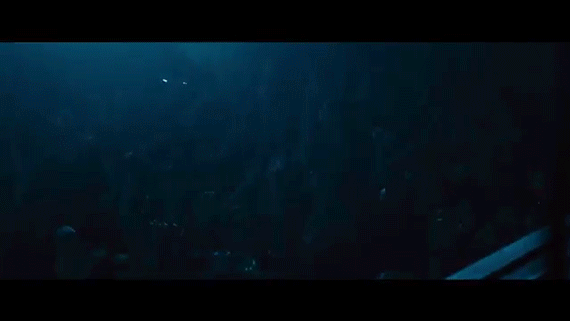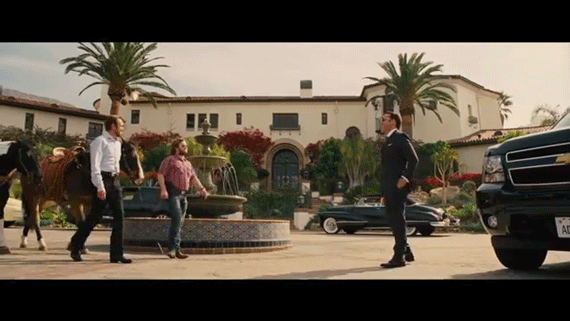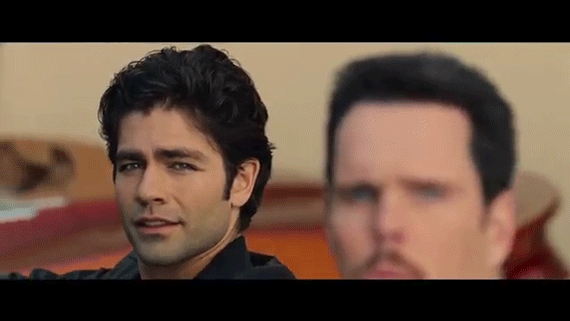
If you’re not in the office on Christmas Day, thank your company. But government policy may have played a role in that as well, even if you aren’t a federal employee. Congress declared the first federal holidays in the 1870s — a handful of observances, with Christmas Day among them, according to a 2014 Congressional Research Service report. However, those holidays applied only to federal workers in the District of Columbia. By 1885, Congress had extended the holidays to federal workers across the country. Even today, Congress’ edict doesn’t apply to anyone else. Congress and the president have never tried to establish holidays that apply to the states, the…

If you’re not in the office on Christmas Day, thank your company. But government policy may have played a role in that as well, even if you aren’t a federal employee.
Congress declared the first federal holidays in the 1870s — a handful of observances, with Christmas Day among them, according to a 2014 Congressional Research Service report. However, those holidays applied only to federal workers in the District of Columbia. By 1885, Congress had extended the holidays to federal workers across the country.
Even today, Congress’ edict doesn’t apply to anyone else. Congress and the president have never tried to establish holidays that apply to the states, the CRS report says. Instead, states determine their own holidays — though most adhere (more or less) to the 11 federal holidays declared by Congress, meaning that employees of those states’ governments receive time off work.
According to the Council of State Governments’ Book of the States 2014, all states have adopted New Year’s Day, Independence Day, Memorial Day, Labor Day, Thanksgiving Day and Christmas Day. All states also honor Martin Luther King Jr.’s Birthday in some way, although a few celebrate it with a more general name, such as Civil Rights Day. Only nine states don’t celebrate Washington’s Birthday, also known as Presidents Day.
“The federal government sets a benchmark,” Dean Baker, co-director of the Center for Economic and Policy Research, told The Huffington Post. He noted that most private employers, but not all, give extra compensation to employees who work on federal holidays.
These federal holidays were created at different times and in response to different movements. Here’s how they each came to be.
NEW YEAR’S DAY, INDEPENDENCE DAY AND CHRISTMAS DAY
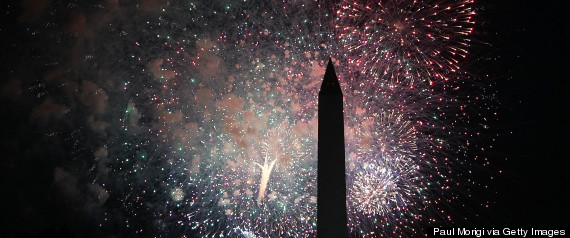
Fireworks light up the Washington Monument in Washington, D.C., July 4, 2014.
These federal holidays, three of the first to be established, were created in 1870. In discussing the rationale for the creation of the holidays, members of Congress implied that most states were observing the holidays already, the CRS report says.
“They always call the states the laboratories of democracy, and quite often things do begin at the state level and then percolate their way up to the national level,” Senate Historian Don Ritchie told The Huffington Post.
Members of Congress probably wanted to be in their home states during those holidays, according to Ritchie, which would have contributed to the push for a national observance. Having people off on the same days in neighboring states also made more sense when it came to interstate commerce, as well as metropolitan areas that straddled a state line.
The dates of these holidays were tied to the traditional celebrations of New Year’s Day on Jan. 1, Independence Day on July 4 and Christmas Day on Dec. 25.
THANKSGIVING DAY
“Any day appointed or recommended by the President of the United States as a day of public fasting or thanksgiving” was also included in the original 1870 legislation. Although President George Washington had issued declarations for a day of thanksgiving a few of the years he was in office, the idea wasn’t celebrated annually until 1863. That’s when President Abraham Lincoln issued a proclamation setting its date for the last Thursday of November.
For decades after that, each president issued a yearly proclamation designating Thanksgiving as the last Thursday of November. In 1939, however, the final Thursday fell on Nov. 30, and President Franklin Delano Roosevelt worried that wouldn’t allow enough time for holiday shopping, so he moved Thanksgiving to the third Thursday of November. Confusion ensued as some states followed his lead and others opted to still observe the holiday a week later. In 1941, Congress permanently declared Thanksgiving Day to be the fourth Thursday of November. Many workplaces also take the following Friday off, and some states have even designated that day as a holiday, but it’s never been recognized as such at the federal level.
PRESIDENTS DAY
The federal holiday many Americans know as Presidents Day still officially goes by its original name of Washington’s Birthday, referring to the country’s first president. It was established by Congress in 1879 and set for Feb. 22, the date in 1732 when George Washington was born.
Washington’s birthday had been recognized before that, though, with celebrations across the country, including many recitations of his farewell address, the Center for Legislative Archives says. To this day, the Senate maintains its tradition, which began in 1862, of an annual reading of the address.
The date for celebrating Washington’s Birthday changed in 1968, when Congress passed the Uniform Monday Holiday Act. That law set the commemoration of Washington’s Birthday as the third Monday of February, and shifted the commemorations of some other holidays to Mondays as well. Congress said the move would “bring substantial benefits to both the spiritual and economic life of the Nation,” according to the Archives. Congress reportedly considered the new law an opportunity for increased time for family, travel and leisure, as well as an end to workweek interruptions from midweek holidays.
MEMORIAL DAY
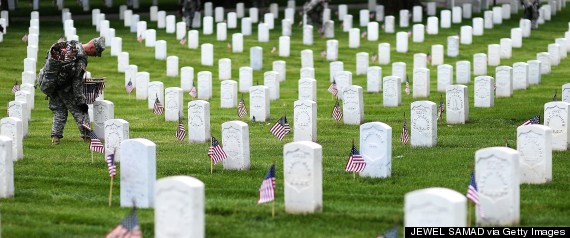
A soldier places flags at gravesites during a ceremony at Arlington National Cemetery in Virginia, May 22, 2014.
Memorial Day, initially called Decoration Day, was created in 1888 for federal workers in D.C. The holiday was already celebrated in many Northern states to honor Union Civil War casualties, and was likely designated a federal holiday because many government employees had served in the war and would want to commemorate it.
The holiday now commemorates dead service members from both sides of the Civil War, as well as other wars, and is celebrated in all states.
The holiday was shifted from May 30 to the last Monday of May with the 1968 Uniform Monday Holiday Act.
LABOR DAY
The creation of Labor Day in 1894 was also a case in which Congress was influenced by the states, since 23 had already established their own Labor Day holidays by that time.
The House Labor Committee noted that time off was important to make an employee “more useful as a craftsman,” according to the CRS.
The CRS report also says: “By honoring labor with a holiday, the committee report suggested, the nation will assure that the nobility of labor [will] be maintained. So long as the laboring man can feel that he holds an honorable as well as a useful place in the body politic, so long will he be a loyal and faithful citizen.'”
VETERANS DAY
In 1938, Armistice Day was designated an annual holiday on Nov. 11 to commemorate the end of World War I and serve as a “national peace holiday,” according to the CRS. The day was renamed Veterans Day in 1954 and broadened to honor service members from other conflicts as well.
The 1968 Uniform Monday Holiday Act initially applied to Veterans Day as well, stipulating that it be observed on the fourth Monday of October. However, veterans groups opposed the change and most states kept their Veterans Day commemorations on Nov. 11, the date in 1918 when World War I fighting ceased. In 1975, President Gerald Ford signed a law that moved the holiday back to Nov. 11, according to the Department of Veterans Affairs.
INAUGURATION DAY
Inauguration Day was named a permanent holiday in 1957 for those in the Washington, D.C., area. It applies every four years on Jan. 20 when a new president is sworn into office.
COLUMBUS DAY
Columbus Day was created in 1968 as part of the Uniform Monday Holiday Act and set for the second Monday in October. At the time, Christopher Columbus was already honored with a holiday in 45 states.
Today, Columbus Day is the annual federal holiday most disputed among states. For many, the focus has shifted to the fact that people had been living in the Americas long before Columbus “discovered” them, and the arrival of Europeans led to widespread disenfranchisement and death for these people. According to the Council of State Governments, at least a dozen states don’t observe Columbus Day at all, and some states and municipalities celebrate it under a different name: It’s Native Americans’ Day in South Dakota, and Indigenous People’s Day in Seattle and Minneapolis.
BIRTHDAY OF MARTIN LUTHER KING JR.
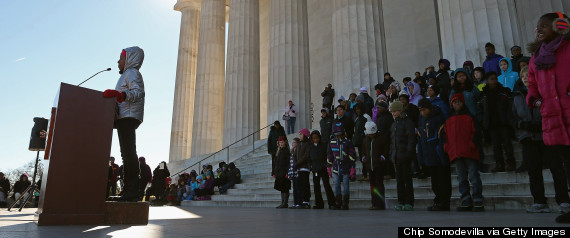
Fifth-graders from Watkins Elementary School in the District of Columbia take turns reciting from memory excerpts of the “I Have a Dream” speech to commemorate Martin Luther King Jr.’s birthday on the steps of the Lincoln Memorial, Jan. 18, 2013.
In 1968, the year Martin Luther King Jr. was assassinated, members of Congress began introducing bills to create a holiday honoring the civil rights leader. Yet the holiday wasn’t established until 1983. Many fiscal conservatives had argued the holiday would cost the government too much money, the House History, Art and Archives website reports. In the end, the observation was set for the third Monday of January, as opposed to King’s actual birthdate of Jan. 15, to avoid the burden on federal offices that a midweek holiday might create.
NEW HOLIDAYS BEING CONSIDERED
In recent years, frustration with low voter turnout has led to a push to designate Election Day — the first Tuesday after the first Monday in November — as a national holiday. A number of bills to this effect have been introduced in recent years, though none has made it through the legislative process. In November, Sen. Bernie Sanders (I-Vt.) introduced legislation to create the holiday, though it didn’t go anywhere in the 113th Congress.
Another proposed holiday is Cesar E. Chavez Day, which would honor the labor leader’s contributions to civil rights and education. Earlier this year, President Barack Obama issued a proclamation declaring March 31, 2014, to be Cesar Chavez Day. However, Congress would have to pass an act, signed into law by the president, for any commemoration to become a permanent federal holiday.
Link:
Here’s Who You Can Thank For Not Having To Work This Christmas

 Like Us On Facebook |
Like Us On Facebook |  Follow Us On Twitter
Follow Us On Twitter
























